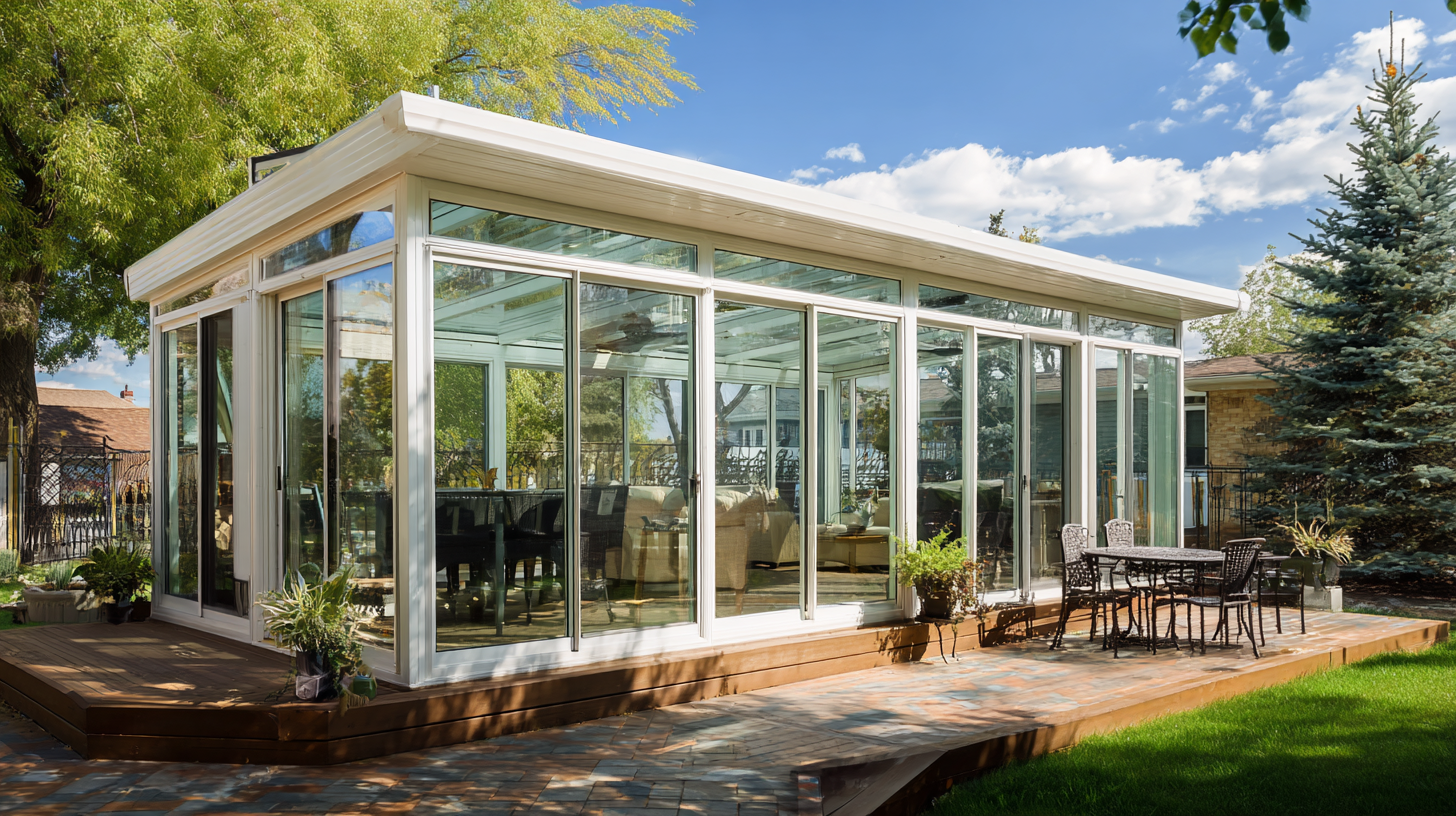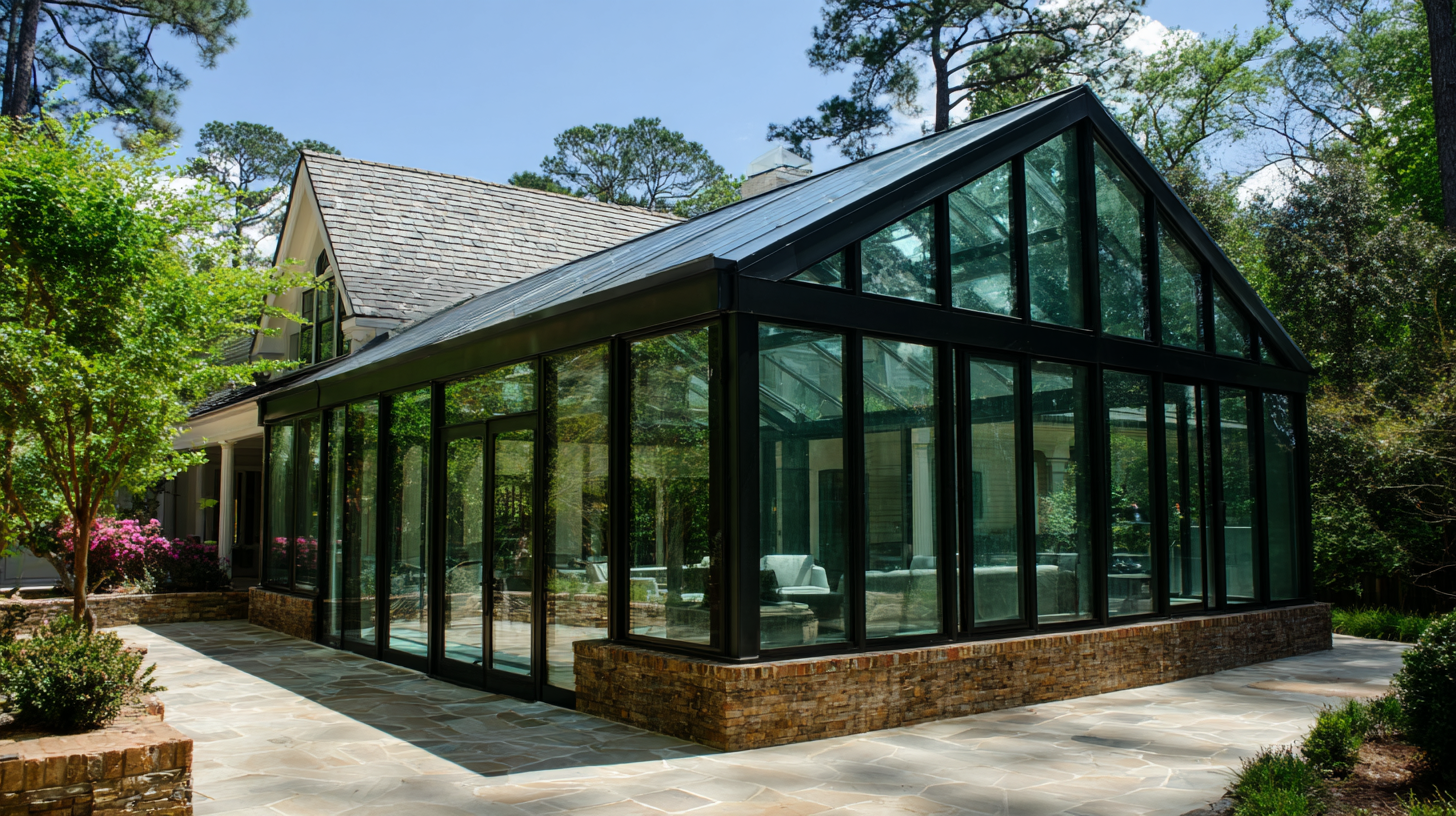In the ongoing debate between home improvement enthusiasts, the choice between Aluminum Clad Sunrooms and traditional models stands out as a pivotal decision for homeowners seeking to enhance their living spaces. The allure of sunrooms lies not only in their capacity to bring the outdoors in but also in their diverse designs and materials, which can dramatically impact aesthetics and functionality. Aluminum Clad Sunrooms, known for their exceptional durability and low maintenance requirements, present a modern option that contrasts sharply with the conventional models that often rely on wood or vinyl.

As we delve deeper into the benefits of each type, we aim to provide a comprehensive comparison that will help homeowners make informed choices, ensuring they invest in a sunroom that not only complements their lifestyle but also stands the test of time. Join us as we explore the merits and drawbacks of these two options to determine which truly reigns supreme in the world of sunrooms.
The design evolution of sunrooms reflects broader trends in architecture and home improvement, illustrating how materials and aesthetics have adapted over time. Traditional sunrooms, often constructed with wood and glass, provide a classic, timeless appeal. They typically embody a strong connection to nature, inviting ample sunlight and blending seamlessly with the surrounding landscape. However, these materials can also require higher maintenance, prompting homeowners to seek alternatives that provide both durability and style.
In contrast, aluminum clad sunrooms represent a significant advancement in design and functionality. With their sleek lines and modern appeal, these sunrooms can withstand the elements while offering energy efficiency. The aluminum exterior is low-maintenance, reducing the need for frequent upkeep and providing a long-lasting solution for homeowners. The shift from traditional designs to aluminum-clad options not only showcases a movement towards more sustainable materials but also a preference for contemporary aesthetics that meet the needs of modern living. As we explore these two styles, it's clear that the evolution of sunroom design is about more than just materials; it's about transforming spaces to reflect lifestyle changes and environmental considerations.
When it comes to energy efficiency, the choice between
aluminum clad sunrooms and traditional ones can significantly impact your comfort
and energy bills. Aluminum clad sunrooms are designed to provide superior insulation,
thanks to their double-glazed glass and thermal breaks that minimize heat loss in colder months. This innovative design
helps maintain a stable indoor environment, reducing your reliance on heating and cooling systems.
Tip: To enhance the energy efficiency
of your sunroom, consider adding window treatments such as cellular shades or insulated drapes. These additions can
further reduce energy consumption by providing an extra layer of insulation.
Traditional sunrooms, while charming, often lack the modern efficiency features found in aluminum clad designs. They may
require more energy to maintain comfortable temperatures, leading to higher utility costs over time. Upgrading your sunroom with energy-efficient materials can make a noticeable difference.
Tip: If you opt for a traditional model,
ensure that you select high-quality windows with low-E coatings. This will help reflect heat during the summer and
retain warmth in the winter, improving overall energy efficiency.

When it comes to maintaining a sunroom, the choice between aluminum clad and traditional models can significantly impact your upkeep efforts. According to a report by the National Association of Home Builders (NAHB), around 20% of homeowners report that maintenance is their primary concern when investing in outdoor living spaces. Aluminum clad sunrooms, known for their durability, require less frequent maintenance compared to traditional wooden structures, which are susceptible to rot, warping, and insect damage. A study by Remodeling Magazine indicates that aluminum options can save homeowners up to 30% in maintenance costs over a 10-year period.
Furthermore, the weather resistance of aluminum clad sunrooms stands out in areas with extreme climates. The American Institute of Architects (AIA) points out that aluminum is naturally resistant to corrosion and can endure the elements without needing constant care. In contrast, traditional sunrooms often require regular painting, staining, or sealing to maintain their appearance and structure. By choosing aluminum cladding, homeowners not only reduce their labor but also trust the longevity of their investment, ultimately enjoying a functional space without the stress of frequent upkeep.
In the ongoing debate between aluminum clad sunrooms and traditional models, aesthetic appeal becomes a key differentiator. Aluminum clad sunrooms offer a sleek, modern appearance, with the ability to blend seamlessly into contemporary architecture. Their low maintenance and durable finish appeal to homeowners seeking a long-lasting investment that complements their homes' exterior design. According to the National Sunroom Association, over 70% of homeowners prioritize visual impact when selecting a sunroom, emphasizing the growing trend towards materials that enhance a home’s exterior while providing functional space.
On the other hand, traditional sunrooms, often constructed with wood frames, evoke a classic charm that many homeowners cherish. However, with advancements in materials and design, aluminum clad options are increasingly becoming the go-to choice for those looking to maximize natural light and enjoy an expansive view of the outdoors. A study noted that sunrooms equipped with large glass surfaces can increase natural light by up to 40%, thus enhancing the wellness benefits associated with bright, airy spaces. This shift in consumer preference highlights the elevation of design not just for aesthetic reasons, but also for the improved quality of living spaces, setting a new standard in luxury home improvement.
When evaluating the costs involved in choosing between aluminum clad sunrooms and traditional models, it’s essential to consider long-term value. Aluminum clad options, while typically requiring a higher upfront investment, offer durability and low maintenance over time, potentially leading to greater savings. In contrast, traditional models may be cheaper initially but could incur higher future costs due to maintenance, repairs, and replacements.

Recent trends indicate that investors are increasingly drawn to assets that promise long-term value. Just as strategic investments in sectors like tech and renewable energy are reshaping financial landscapes, homeowners should approach their sunroom decision with a similar mindset. Integrating features that minimize long-term costs, such as energy efficiency and reduced need for upkeep, aligns with the principles of sustainable investment and can enhance property value over time. Ultimately, by prioritizing durable and economically sound choices, homeowners can secure a sunroom that not only complements their living space but also proves beneficial in the long run.




